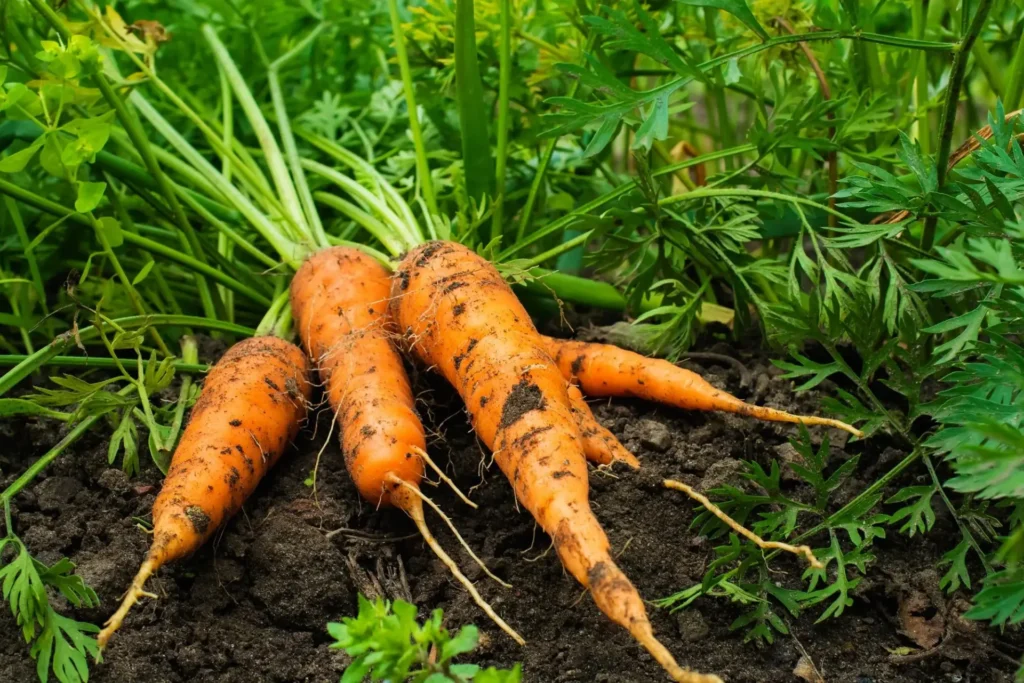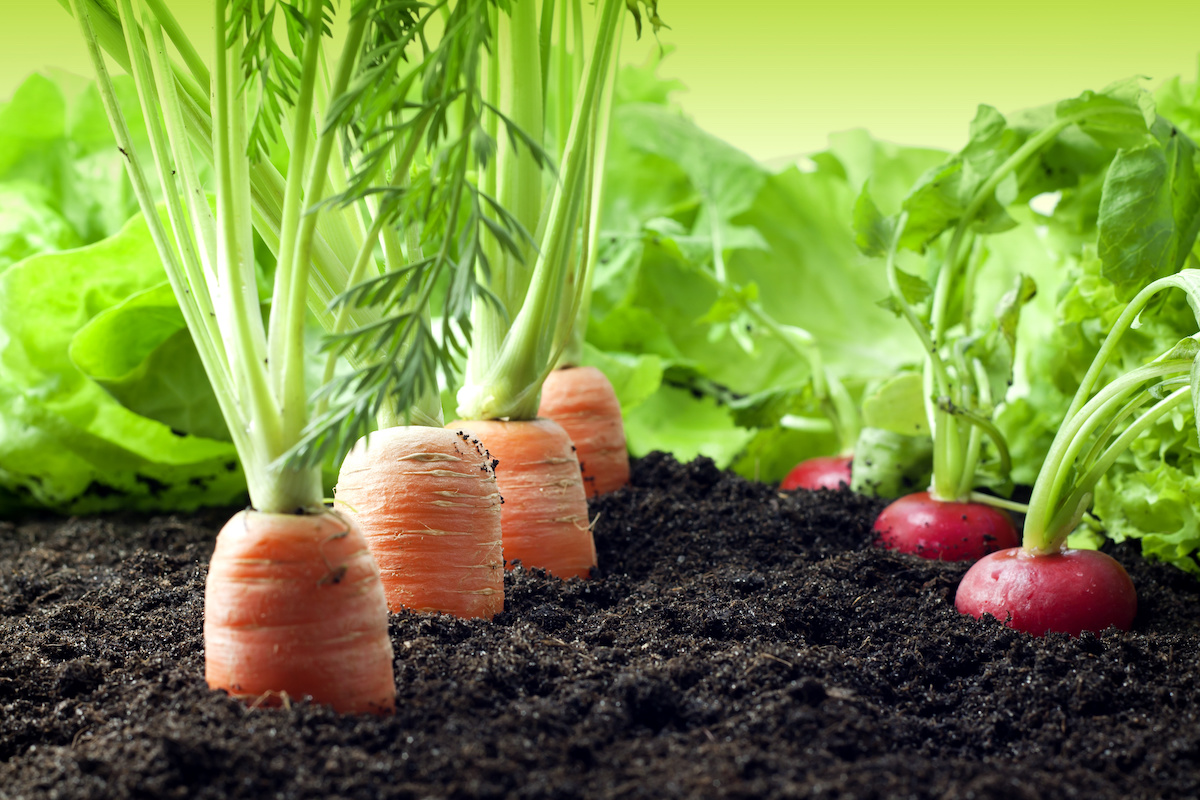
🥕 How to Grow Carrots from Seed – Everything You Need to Know!
A Complete, No-Stress Guide for Beginners (and a Few Pro Tips Too)
Growing your own carrots might feel intimidating at first—after all, they grow underground, right? But the truth is, with a little planning and patience, carrots are one of the most rewarding vegetables to grow from seed. There’s nothing like pulling a crisp, sweet, homegrown carrot from your own soil—it’s a total game-changer compared to anything store-bought.
In this guide, we’re going deep (pun intended) into how to grow carrots from seed, from picking the right variety and preparing your soil, to watering tips, harvesting, troubleshooting common problems, and storing your bounty.

Whether you’re a first-time gardener or just want to improve your carrot game, this article covers everything you need to know—no fluff, just real advice that works.
🌱 Why Grow Carrots from Seed?
Carrots are a cool-season root vegetable that grows best when planted directly in the soil. Unlike some crops, carrots don’t transplant well, which is why starting them from seed is the gold standard.
Top reasons to grow carrots at home:
- 🥬 Fresh taste: Homegrown carrots are incredibly sweet and flavorful.
- 🌈 Variety: Grow colors and shapes you’ll never find at the grocery store (purple, white, yellow, round!).
- 🥕 Space-efficient: Perfect for raised beds, deep containers, or traditional rows.
- 💸 Cost-effective: One packet of seeds gives you dozens—if not hundreds—of carrots.
- 🌿 Cold-hardy: Carrots thrive in spring and fall gardens and can handle frost.
📅 Best Time to Plant Carrot Seeds
Carrots grow best in cool weather, so plan to sow your seeds accordingly.
Planting windows:
- Spring crop: Sow seeds 2–3 weeks before your last expected frost.
- Fall crop: Sow about 8–10 weeks before your first expected fall frost.
🌡️ Optimal germination occurs in soil temperatures between 55°F–75°F (13°C–24°C). Too cold and they germinate slowly; too hot and they may bolt or struggle.
🧾 What You’ll Need to Get Started
Here’s a quick checklist of what you’ll need before you begin:
- Quality carrot seeds (heirloom or hybrid varieties)
- Loose, rock-free garden soil or raised beds
- Compost or well-aged organic matter
- Trowel or hand fork
- Rake (for smoothing soil)
- Watering can or gentle hose nozzle
- Mulch (like straw or shredded leaves)
🥕 Step-by-Step Guide: How to Grow Carrots from Seed

1. Choose the Right Carrot Variety
Not all carrots are created equal. Choose a type that fits your growing conditions and soil depth.
Short or round varieties (like ‘Parisian’ or ‘Thumbelina’) are great for shallow or rocky soil, while longer types (like ‘Danvers’ or ‘Nantes’) need loose, deep soil.
Also consider:
- Color: Orange, purple, white, yellow
- Days to maturity: Ranges from 50–80+ days
2. Prepare Your Soil
Carrots need deep, loose, well-drained soil to grow straight and healthy.
- Remove rocks, clumps, and debris.
- Loosen soil to at least 10–12 inches deep.
- Mix in compost or well-rotted manure (not fresh—it can cause forking).
- Avoid nitrogen-heavy fertilizers (too much leaf, not enough root).
Tip: Use raised beds or deep containers if your native soil is too compact or rocky.
3. Sow the Seeds
Carrot seeds are tiny and a bit tricky to handle. Here’s how to do it right:
- Sow directly outdoors ¼ inch deep and 1–2 inches apart.
- Space rows about 12–18 inches apart.
- Lightly cover with fine soil and water gently.
🌱 Pro Tip: Mix seeds with sand for easier even distribution, or use seed tapes.
4. Keep the Soil Consistently Moist
This part is crucial! Carrot seeds can take 7–21 days to germinate, and they need even moisture the whole time.
- Mist soil daily if dry.
- Use a light mulch or floating row cover to retain moisture.
- Avoid soil crusting by watering gently and often.
Once seedlings appear, thin them to about 2 inches apart to give each root room to grow.
5. Maintain & Care for Your Carrots
Here’s how to keep your carrots happy throughout the growing season:
🌞 Sunlight
- Full sun is best (6–8 hours daily), but they tolerate light shade.
💧 Watering
- Keep soil moist but not soggy.
- Water 1 inch per week, more in hot weather.
🌱 Mulching
- Mulch keeps the soil cool, moist, and weed-free.
- Helps prevent the shoulders of carrots from turning green.
🔁 Feeding
- If needed, feed lightly with a balanced, low-nitrogen fertilizer.
- Over-fertilizing can cause deformed roots.
🧑🌾 When & How to Harvest Carrots

Carrots are ready 50–80 days after planting, depending on variety. Look for:
- Bright orange tops (or purple/yellow/white!)
- Diameter of ½ to 1 inch, depending on type
- Gently pull one to test for size and flavor
How to harvest:
- Water the area first to soften soil.
- Use a fork to gently loosen the soil—don’t just yank!
- Twist and pull the carrots out carefully.
Carrots left in cool soil after a light frost become sweeter—just don’t wait too long or they’ll crack or get woody.
🧊 How to Store Carrots After Harvest
Fresh carrots keep well if stored correctly:
- Remove tops to prevent moisture loss.
- Store unwashed carrots in a cool, dark place (like a root cellar or fridge).
- Layer in sand or sawdust for long-term storage.
- Carrots can last 3–5 months in cold storage.
Or try:
- Freezing: Blanch first.
- Pickling: A crunchy, zesty snack!
- Canning or juicing: For larger harvests.
🐛 Common Carrot Growing Problems
| Issue | Cause | Solution |
|---|---|---|
| Poor germination | Dry soil, crusting, too cold or too deep | Keep soil moist, sow shallow, use row cover |
| Forked/misshapen roots | Rocks, fresh manure, hard soil | Use loose soil, remove debris |
| Green shoulders | Carrot tops exposed to sun | Add mulch or mound soil |
| Cracked roots | Irregular watering | Water consistently |
| Carrot rust fly | Brown tunnels inside root | Use row covers, rotate crops |
Rotate crops yearly to avoid pest buildup, and don’t plant carrots where you recently grew other root veggies.
🌼 Companion Planting for Carrots

Plant carrots alongside these friendly neighbors to maximize space and deter pests:
Good companions:
- Onions, leeks, garlic (repel carrot flies)
- Lettuce, radishes (mature faster)
- Tomatoes, peas
Avoid planting near:
- Dill and parsnips (they attract similar pests)
- Parsley and celery (compete for nutrients)
Table of Contents
❓ Frequently Asked Questions
Q: Can I grow carrots in containers?
Absolutely! Use a container at least 12 inches deep. Choose short-rooted varieties for best results.
Q: Why are my carrots small?
Could be:
- Overcrowding (didn’t thin)
- Poor soil (not loose or deep enough)
- Lack of water
Q: Can I regrow carrots from scraps?
You can regrow greens from carrot tops in water—but not the edible root.
Q: How long do carrot seeds last?
Stored in a cool, dry place, carrot seeds remain viable for 2–3 years.
Q: Should I cover carrot seeds after planting?
Yes—but only lightly. Carrot seeds need light to germinate but also need some cover to hold moisture. Use fine soil or compost.
✅ Conclusion: Why Growing Carrots from Seed Is Totally Worth It
Carrots are one of those magical crops that feel like a little surprise every time you harvest. You can’t always see how well they’re doing underground—but once you pull them up and see those vibrant colors and crunchy roots, you’ll be hooked.
Yes, they take a bit of patience—especially during germination—but once they’re up, carrots are easy to maintain, incredibly rewarding, and endlessly useful in the kitchen. And with so many fun varieties to choose from, it’s easy to turn your garden into a rainbow of sweet, homegrown goodness.
So don’t let their underground lifestyle intimidate you. With the right setup, some consistent watering, and a little weeding now and then, you’ll be growing juicy, crisp, delicious carrots in no time.
🧾 Quick Carrot Growing Summary
| Step | Details |
|---|---|
| Best Planting Time | Early spring or late summer |
| Germination Time | 7–21 days |
| Soil Requirements | Loose, deep, rock-free, well-draining soil |
| Light Requirements | Full sun (6–8 hours daily) |
| Spacing | 2 inches apart, 12–18 inches between rows |
| Days to Maturity | 50–80 days, depending on variety |
| Watering | 1 inch per week; consistent moisture |
| Fertilizing | Light feeding; avoid high nitrogen |
| Harvesting Time | When tops are ½–1 inch in diameter |
| Storage | Cool, dark, humid place for 3–5 months |
